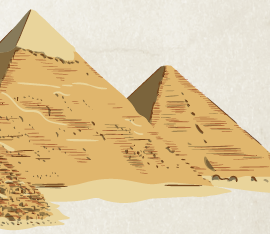The Mystery of the Egyptian Pyramids
Have you ever thought about how the Egyptians built the pyramids without modern technology? Well, many researchers are working to understand the sophisticated planning that would have been involved in pyramid building, which required constructing not just the pyramids, but also the temples, boat pits and cemeteries located near the enormous structures.
How could they move such huge stones to build those gigantic tombs? Researchers from the University of Amsterdam thought that the ancient Egyptians carried the massive stones across the desert using big flat sleds. They even carried out some experiments in their labs to see if their assumption was right. They faced a huge problem. The sleds kept sinking into the sand and could not be moved because of the sand banks in front. So how did the Egyptians get over that?
Then the same researchers came up with a solution to create a firm surface for the sleds. They realised that by keeping the sand wet, they would have a harder surface making it twice as easy to drag the sleds.
The scientific fact is that when sand gets wet, it becomes firmer, so less pulling force is needed because of capillary bridges - where microdroplets of water bind grains of sand to one another through capillary action. As a result of that, less friction occurs during the pulling process. Apparently, Egyptians knew about this thousands of years ago. For example, Artwork within the tomb of Djehutihotep, which was discovered in the Victorian Era, actually displays a scene of slaves pouring liquid into the sand. It is surprising to see that we have taken so long to work this out even though it was pictured on the walls of the pyramids which are standing right in front of our eyes.

